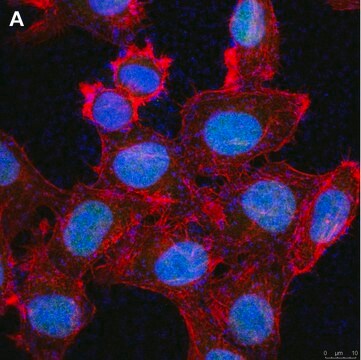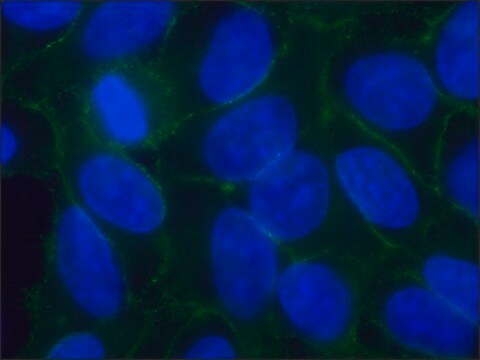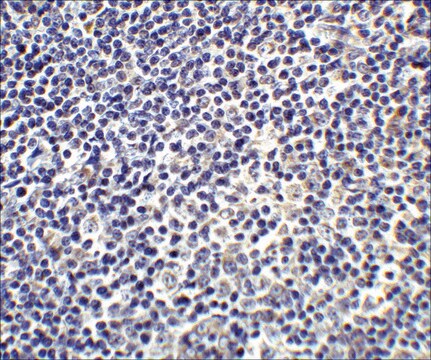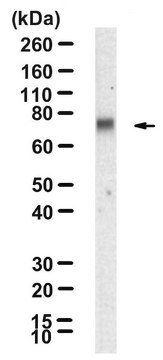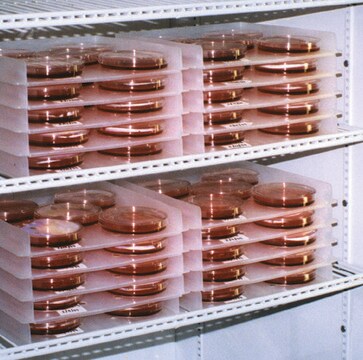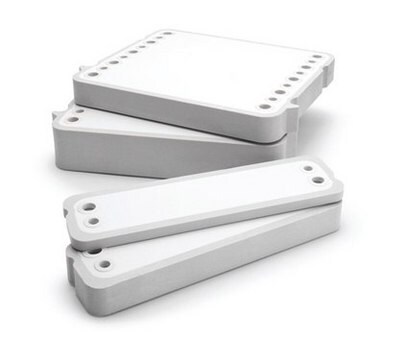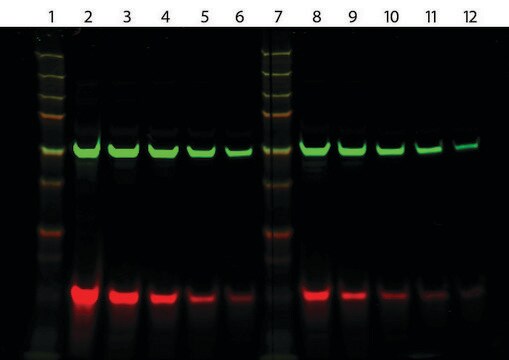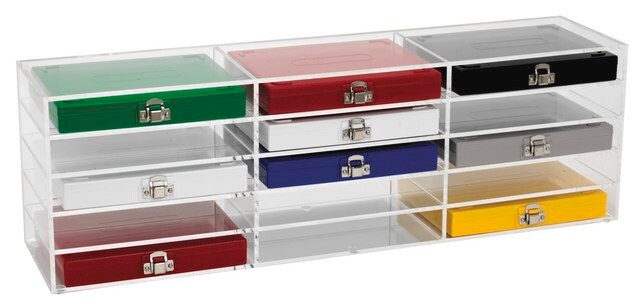MABE1152M
Anti-Cryptochrome-1 Antibody, clone D46-3361
clone D46-3361, from rat
Sinônimo(s):
Cry1, cryptochrome 1 (photolyase-like), Cryptochrome-1, Phll1, Cry-1
About This Item
Produtos recomendados
fonte biológica
rat
Nível de qualidade
forma do anticorpo
purified immunoglobulin
tipo de produto de anticorpo
primary antibodies
clone
D46-3361, monoclonal
reatividade de espécies
mouse
embalagem
antibody small pack of 25 μL
técnica(s)
ChIP: suitable
western blot: suitable
Isotipo
IgMκ
nº de adesão NCBI
nº de adesão UniProt
modificação pós-traducional do alvo
unmodified
Informações sobre genes
mouse ... Cry1(12952)
Descrição geral
Especificidade
Imunogênio
Aplicação
Chromatin Immunoprecipitation (ChIP) Analysis: A representative lot detected Cryptochrome-1 in Chromatin Immunoprecipitation applications (Ye, R., et. al. (2011). J Biol Chem. 286(29):25891-902).
Qualidade
Western Blotting Analysis: A 1:500 dilution of this antibody detected Cryptochrome-1 in 10 µg of NIH/3T3 cell lysate.
Descrição-alvo
forma física
Outras notas
Não está encontrando o produto certo?
Experimente o nosso Ferramenta de seleção de produtos.
Código de classe de armazenamento
10 - Combustible liquids
Classe de risco de água (WGK)
WGK 2
Certificados de análise (COA)
Busque Certificados de análise (COA) digitando o Número do Lote do produto. Os números de lote e remessa podem ser encontrados no rótulo de um produto após a palavra “Lot” ou “Batch”.
Já possui este produto?
Encontre a documentação dos produtos que você adquiriu recentemente na biblioteca de documentos.
Nossa equipe de cientistas tem experiência em todas as áreas de pesquisa, incluindo Life Sciences, ciência de materiais, síntese química, cromatografia, química analítica e muitas outras.
Entre em contato com a assistência técnica